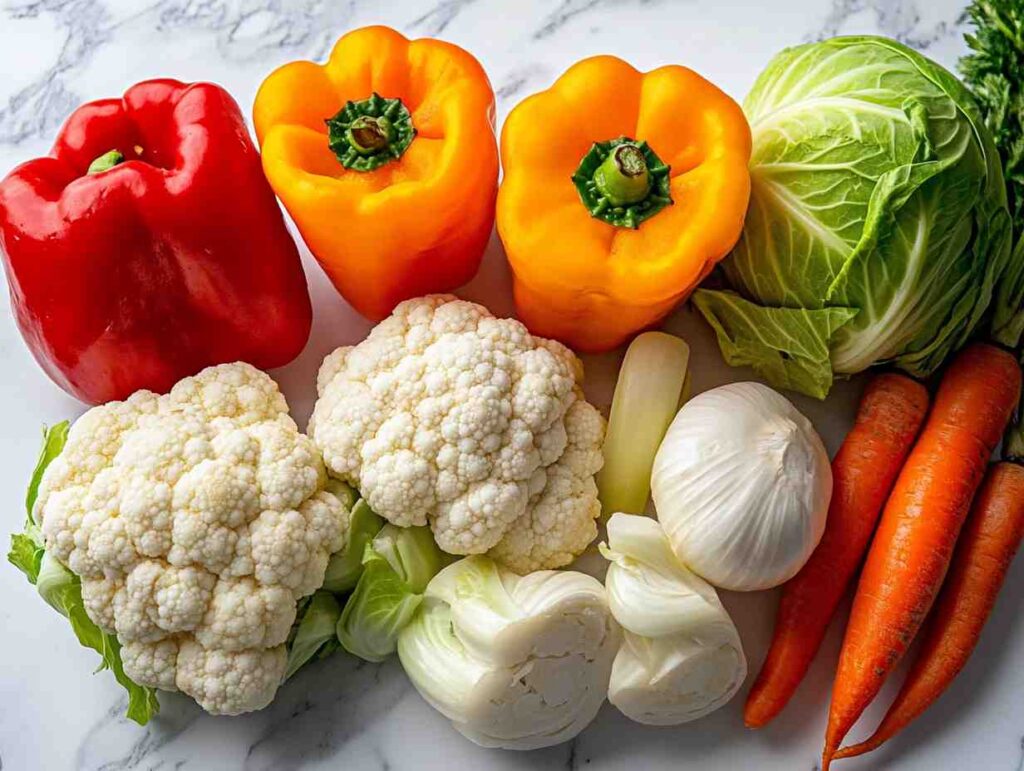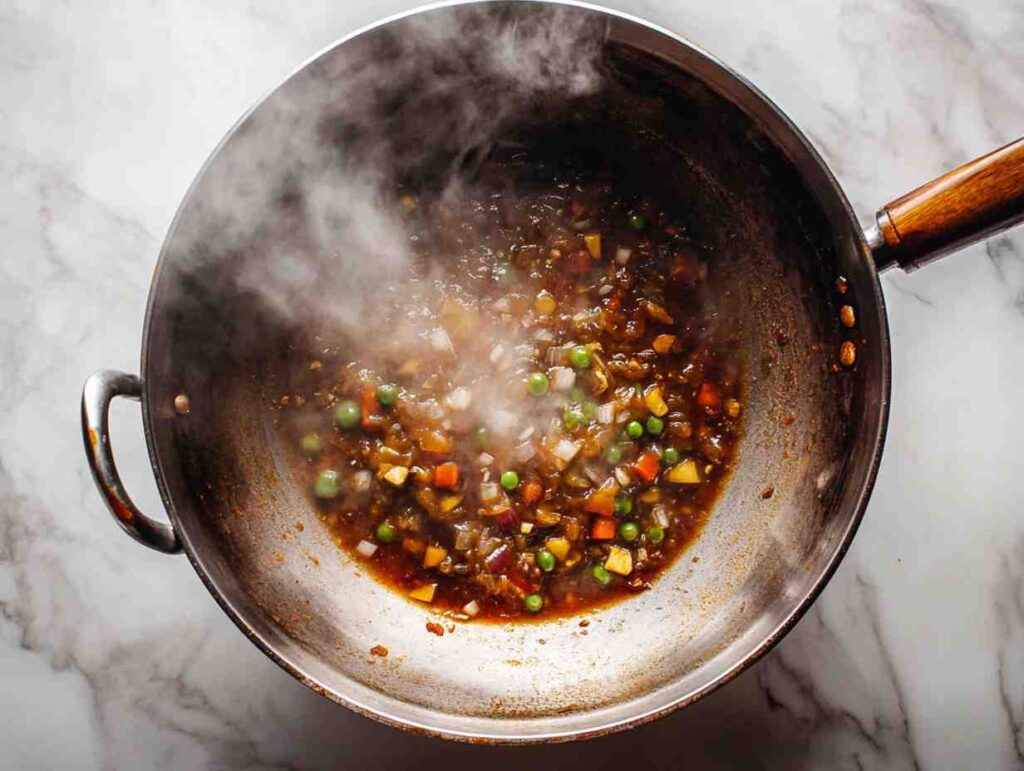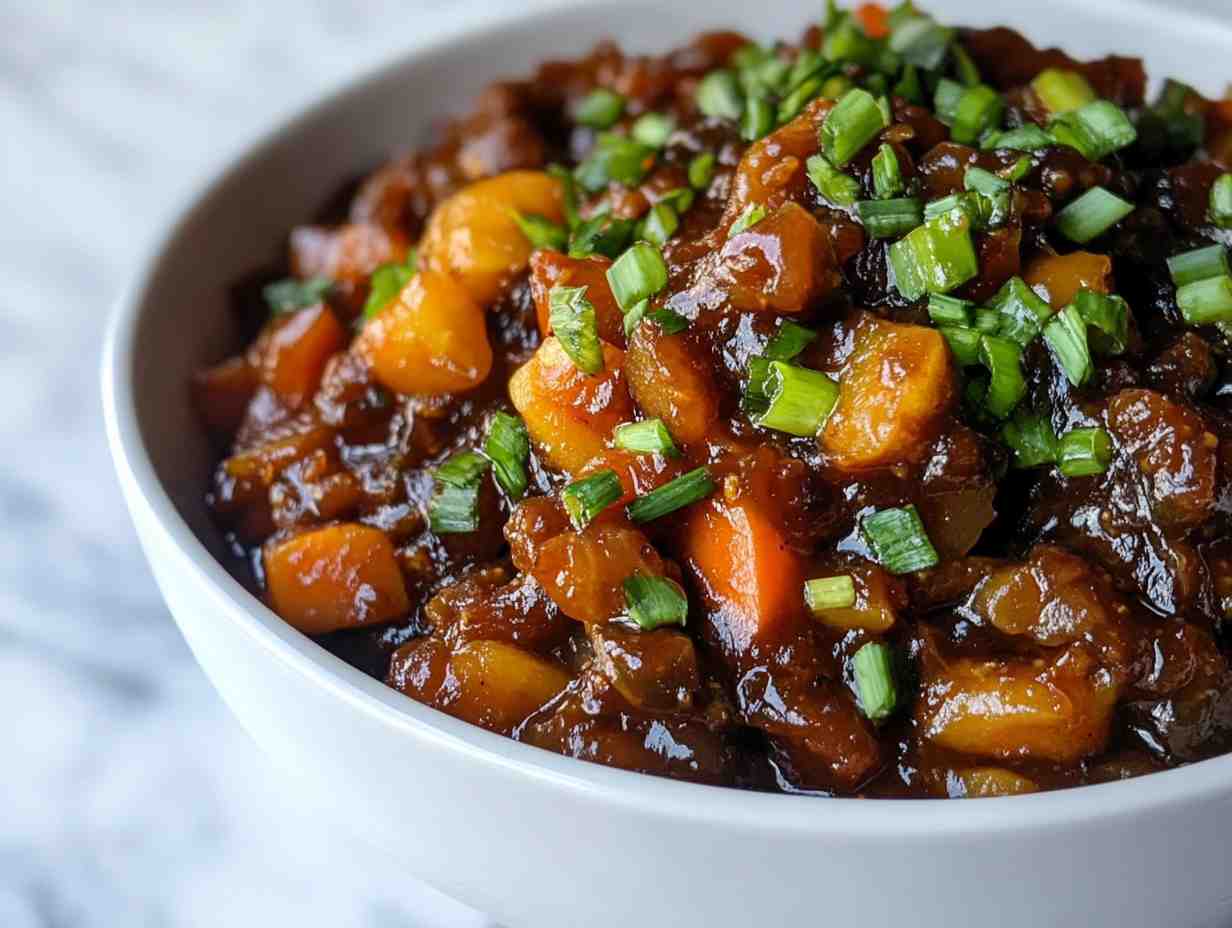Are you curious about what are the ingredients of veg manchurian? This popular Indo-Chinese dish is a delightful mix of flavors and textures. It’s a great vegetarian option for anyone wanting something savory and satisfying. In this article, we’ll explore all the essential components that make up a delicious veg manchurian. We’ll also explore various options and substitutions. Therefore, let’s dive in!
Understanding the Basics: What Goes into Veg Manchurian?
Veg manchurian is a fusion dish that combines Chinese cooking methods with Indian spices and flavors. The core elements usually consist of a vegetable base, a flavorful batter, and a rich, tangy sauce. Therefore, understanding each component is key to creating a perfect dish. Furthermore, its versatility makes it a favourite for many.
The Key Components of a Traditional Veg Manchurian
To fully grasp what are the ingredients of veg manchurian, it’s important to look at its key parts. First, the vegetable base provides the main substance. Second, the batter creates a crispy coating. Third, the sauce gives the dish its unique flavor profile. Therefore, each component plays a vital role.
Detailed Ingredient Breakdown: What are the main ingredients of veg Manchurian?
Now, let’s break down each element to understand what are the ingredients of veg manchurian in detail. This will help you to prepare this recipe at home with great confidence.
The Vegetable Base: A Variety of Options

The base of veg manchurian is typically made with a mix of vegetables. Therefore, this gives the dish a great combination of flavors and textures. Here are some of the most common vegetables used:
- Cauliflower: Provides a tender texture and mild flavor.
- Cabbage: Adds a crunchy texture and a touch of sweetness.
- Carrots: Bring sweetness and a vibrant color.
- Capsicum (Bell Peppers): Contribute a slightly sweet and peppery flavor.
- Green Beans: Offer a slightly grassy flavor and firm texture.
- Broccoli: Another popular option that brings a unique flavour to the dish.
Therefore, the choice of vegetables can be adjusted to your preference.
The Batter: Creating a Crispy Coating
The batter is essential to get that perfect crispy coating. Therefore, it also contributes to the dish’s overall texture. Here are the main components of the batter:
- All-Purpose Flour (or Maida): Provides the main structure of the batter.
- Cornstarch (or Corn Flour): Adds crispiness to the coating.
- Ginger Paste: Imparts a warm, spicy flavor.
- Garlic Paste: Adds a pungent and savory note.
- Salt: Enhances the overall flavor of the batter.
- Black Pepper: Contributes a mild spiciness.
- Water: Used to create the right consistency of the batter.
Therefore, getting the batter right is very important.
The Sauce: The Heart of Veg Manchurian
The sauce is what gives veg manchurian its distinctive flavor profile. Therefore, it is usually a complex mix of sweet, savory, and spicy elements. Here are its main components:
- Vegetable Oil: Used for cooking the sauce.
- Ginger, Chopped: Adds a warm, spicy note.
- Garlic, Chopped: Provides a pungent and savory flavor.
- Onion, Chopped: Contributes a slightly sweet and savory base.
- Green Chilies, Chopped (Optional): Adds heat.
- Soy Sauce: Gives the sauce its salty and umami flavor.
- Chili Sauce: Adds spiciness and a hint of tanginess.
- Tomato Ketchup: Provides sweetness and a tomato flavor.
- Vinegar: Adds tanginess and balances the flavors.
- Sugar: Balances the saltiness and acidity.
- Salt: Enhances the overall flavor.
- Water: Helps adjust the consistency of the sauce.
- Spring Onions: Often used as a garnish.
Therefore, the sauce is what provides the great flavour to this dish.
Step-by-Step Guide: Preparing Veg Manchurian
Knowing what are the ingredients of veg manchurian is only part of the process. Therefore, let’s explore how to combine these ingredients to make this dish:
Preparing the Vegetables
- Wash and Chop: Wash all the vegetables thoroughly. Chop them into small, bite-sized pieces.
- Blanch (Optional): Blanch the vegetables in hot water for 2-3 minutes. This step is optional. However, it can help to tenderize them slightly.
- Drain: Drain the vegetables and set aside. Make sure they are dry.
Making the Batter
- Combine Dry Ingredients: In a large bowl, mix the flour, cornstarch, ginger paste, garlic paste, salt, and black pepper.
- Add Water: Gradually add water. Stir well until you get a smooth, thick batter. The batter should coat the vegetables well.
Frying the Vegetables
- Heat Oil: Heat vegetable oil in a pan or wok.
- Coat the Vegetables: Dip each piece of vegetable in the batter. Make sure it is completely coated.
- Fry: Fry the coated vegetables in the hot oil until they are golden brown and crispy. Therefore, it’s best to do this in small batches.
- Drain Excess Oil: Remove the fried vegetables and place them on a paper towel to absorb the excess oil.
Preparing the Sauce
- Sauté Aromatics: Heat vegetable oil in a pan or wok. Add the chopped ginger, garlic, and onions. Sauté until fragrant.
- Add Spices: Add the chopped green chilies, if using. Sauté for a few more seconds.
- Add Liquids: Add soy sauce, chili sauce, tomato ketchup, vinegar, sugar, and salt. Mix well. In addition, add water to adjust the consistency.
- Simmer: Simmer the sauce for a few minutes, allowing all the flavors to combine.
Combining the Sauce and Vegetables
- Add Vegetables: Add the fried vegetables to the sauce.
- Toss Gently: Toss the vegetables gently to ensure they are completely coated with the sauce.
- Cook Briefly: Cook for 2-3 minutes. The vegetables will absorb the flavor of the sauce.
- Garnish and Serve: Garnish with chopped spring onions. Serve the veg manchurian hot.
Variations of Veg Manchurian: Customizing Your Dish
There are many ways to adjust your veg manchurian. Therefore, you can easily experiment with different flavors and textures.
Exploring Different Vegetable Combinations
- Mixed Vegetable Manchurian: Use a combination of all the vegetables mentioned above.
- Cabbage Manchurian: Focus only on cabbage. For example, this is a simple but delicious option.
- Mushroom Manchurian: Add mushrooms to the mix. This gives a unique flavour.
- Tofu Manchurian: Use tofu instead of other vegetables.
Therefore, you can try various combinations.
Adjusting the Spiciness and Flavor Profiles
- Spicy Manchurian: Increase the amount of chili sauce and green chilies.
- Sweet and Tangy Manchurian: Add a bit more sugar and vinegar.
- Garlic Manchurian: Increase the amount of garlic. For instance, this creates a more flavourful dish.
- Ginger Manchurian: Add more ginger for a warm flavour.
Therefore, you can adjust the recipe based on your taste.
Experimenting with Different Sauces and Coatings
- Dry Manchurian: Use less water in the sauce to get a drier dish.
- Gravy Manchurian: Add more water to get a saucier dish.
- Using Different Flours: Use rice flour in place of all-purpose flour for a gluten-free version.
- Different Spice Blends: Add other spice mixes to create a unique flavor.
Therefore, the possibilities are endless.
Nutritional Aspects of Veg Manchurian: What to Consider?

It is also important to know the nutrition of this dish. Therefore, here’s a look at its potential nutritional benefits and considerations.
Understanding the Caloric Content
Veg manchurian is a deep-fried dish. Therefore, it can be high in calories. The exact caloric content can change depending on what ingredients you use. However, moderation is always key. You can bake it instead to reduce calories.
Vitamin and Mineral Content from Vegetables
Vegetables are a source of many nutrients. Therefore, using fresh vegetables will bring many vitamins to this dish. These vitamins are very beneficial for your health. Also, vegetables are a source of fibre.
Potential Health Benefits and Considerations
While veg manchurian contains vegetables, it’s important to be aware of the deep-frying method. Therefore, try to use less oil when making this dish. Also, it’s important to use healthy oils such as avocado oil.
Nutritional Information Per Serving (approximate):
| Nutrient | Amount (Approximate) |
| Calories | 300 – 400 |
| Protein | 8 – 10 g |
| Fat | 18 – 25 g |
| Carbohydrates | 30 – 40 g |
| Fiber | 4 – 6 g |
| Vitamin A | 50 – 80% DV |
| Vitamin C | 60 – 90% DV |
Note: Nutritional values are approximate and can vary based on specific ingredients and preparation methods.
Serving and Pairing Veg Manchurian: Creating a Meal
Now that you know what are the ingredients of veg manchurian, let’s discuss how best to serve it.
Ideal Serving Suggestions: Appetizer or Main Course?
Veg manchurian is versatile. Therefore, you can serve it as a starter or as a main course. As an appetizer, serve small portions with toothpicks. As a main dish, serve with rice or noodles.
Complementary Dishes and Sides
- Fried Rice: Vegetable fried rice is a classic pairing.
- Noodles: Hakka noodles or chow mein are also great options.
- Salad: A simple cucumber and yogurt salad is also a nice addition.
- Roti or Naan: Flatbreads can be used for a different variation.
Therefore, there are many dishes to pair with it.
Drink Pairing Recommendations
Pair veg manchurian with light beverages. Try a light beer or some sparkling water. Also, try iced tea or lemon water to complement the dish.
Frequently Asked Questions (FAQs) About Veg Manchurian
Let’s answer some of the common questions people have about veg manchurian. Therefore, we will provide you with all the information needed.
What are the ingredients in veg manchurian?
The main ingredients in veg manchurian include mixed vegetables like cauliflower, cabbage, carrots, and capsicum. The batter contains flour, cornstarch, ginger, and garlic. The sauce is a mix of soy sauce, chili sauce, tomato ketchup, vinegar, and spices. Therefore, it is a complex mix of flavors.
What does a Manchurian contain?
A typical manchurian dish contains vegetables or meat coated in a flavorful batter, then deep-fried. It is then tossed in a spicy, sweet, and tangy sauce. Therefore, it can be made with different ingredients.
Is veggie Manchurian healthy?
Veg manchurian contains vegetables. Therefore, it does provide some nutrients. However, it’s often deep-fried and can be high in calories and unhealthy fats. Therefore, consuming it in moderation is important. Also, when making at home use less oil if possible.
Can we use rice flour instead of corn flour in Manchurian?
Yes, you can use rice flour instead of corn flour in manchurian. Rice flour will make the coating very crispy. Therefore, it’s a great alternative for a gluten-free version.
Conclusion: Mastering Veg Manchurian at Home
Knowing what are the ingredients of veg manchurian is the first step. Therefore, you can now confidently create this dish at home. This versatile dish allows for various customizations. Therefore, you can make it just the way you like it. So, get ready to enjoy this delicious Indo-Chinese treat.

